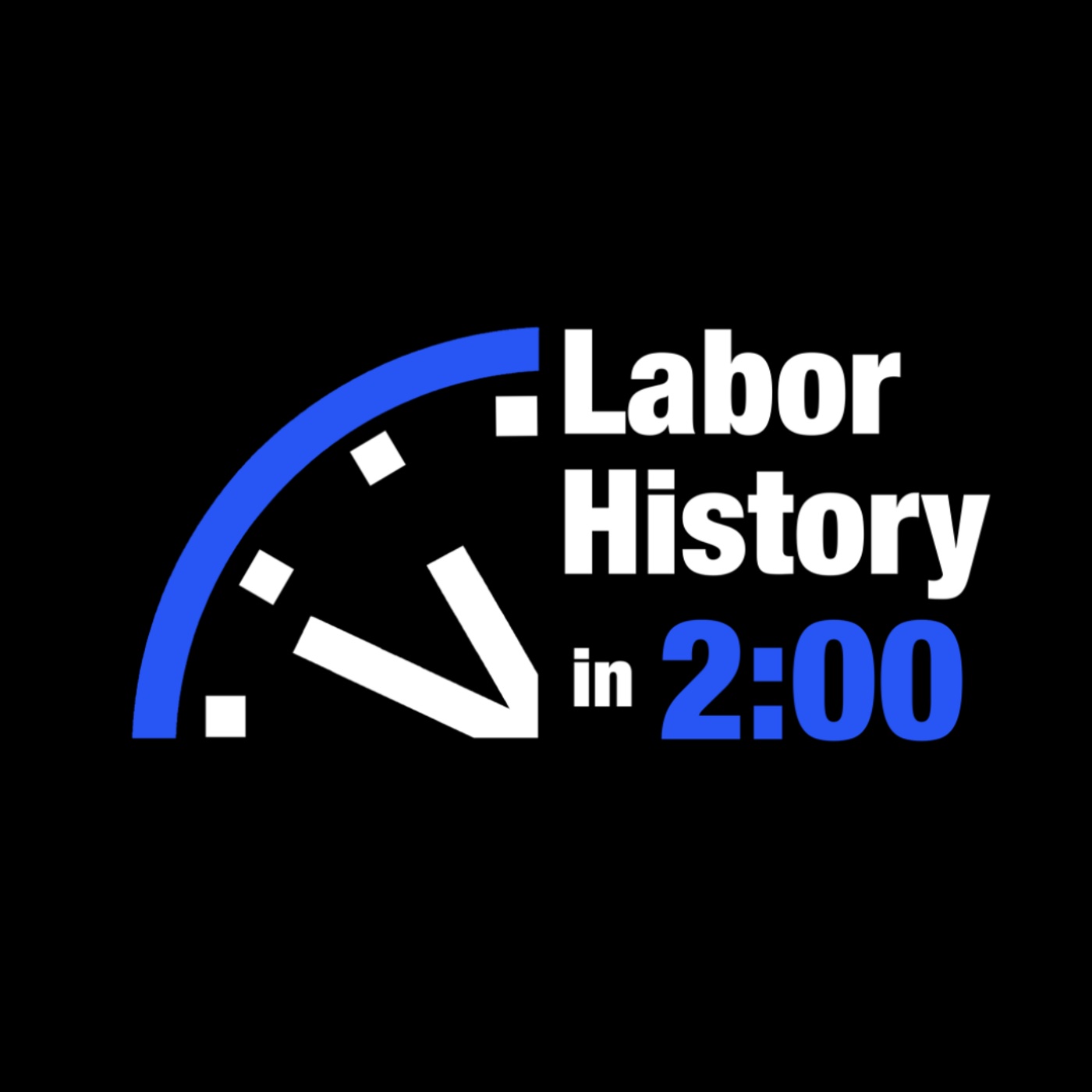Episodes
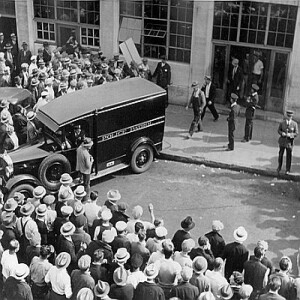
Friday Jul 05, 2024
July 5 - Bloody Thursday
Friday Jul 05, 2024
Friday Jul 05, 2024
On this day in labor history the year was 1934.
That was the day known as Bloody Thursday.
The historic West Coast Maritime Strike had been raging since May 9.
Longshoremen refused to cede to the Industrial Association, determined to open the ports by force.
The shipping bosses had rejected strikers’ demands, including a union hiring hall and recognition of offshore unions.
By July 3, picketers had been fighting for hours to stop trucks sent into move cargo under police protection, as bosses attempted to open the ports.
At 8 a.m. on this day, a line of strikebreaking trucks emerged.
Thousands of strike squads amassed in the warehouse district.
The Battle of Rincon Hill had begun.
The fighting continued through the afternoon in the center of the Embarcadero as strikers attempted to stop scab freight cars.
By the time it was over, longshoreman Howard Sperry and strike supporter, Nick Bordoise lay dead from police bullets.
30 strikers had been shot and dozens more lay in the hospital, some critically wounded.
The San Francisco Chroniclereported, “Blood ran red in the streets of San Francisco.”
In Workers on the Waterfront, Bruce Nelson notes, “Bloody Thursday was an epic moment. Strikers conducted themselves with remarkable precision and imagination in the face of three successive assaults by policemen who were using their firearms feely and laying down a barrage of tear gas bombs.
Donald MacKenzie Brown, the businessman eyewitness, was overawed by the workers ‘insane courage;’ “in the face of bullets, gas, clubs, horse hoofs, death; against fast patrol cars and the radio, they fought back with rocks and bolts till the street was a mass of debris. They were fighting desperately for something that seemed to be life for them.”
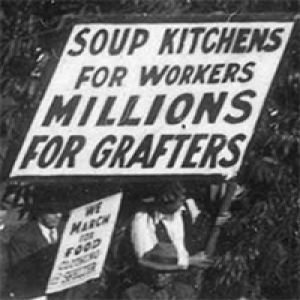
Thursday Jul 04, 2024
July 4 - Founding of the National Unemployed Council
Thursday Jul 04, 2024
Thursday Jul 04, 2024
On this day in labor history, the year was 1930.
That was the day some 1300 labor radicals and Communist Party supporters assembled in Chicago to establish The National Unemployed Council.
That spring, Councils in major cities across the country held massive rallies for jobs and relief.
They were responding to near catastrophic conditions created by the Stock Market crash.
Delegates emerged from the founding convention with an organizational structure and demands for action.
These included unemployment insurance, cash and work relief, public works at union wages, free food for children of the unemployed and a moratorium on evictions.
Delegates acknowledged that African-Americans bore the worst of the unfolding Depression.
They worked to address racial discrimination as part of an integrated push for jobs and relief.
Councils were established throughout 46 states.
They were best known for massive demonstrations, hunger marches and rent strikes.
Councils mobilized hundreds, sometimes thousands quickly to march on city halls or relief offices when benefits were threatened.
They were also able to mobilize scores of supporters at a moment’s notice to stop evictions.
And in a unique move, councils often mobilized the unemployed to bolster picket lines during strikes.
This undercut employer attempts at recruitment of scabs.
By 1935, the National Unemployed Council merged with other socialist unemployed groupings, led by the Socialist Party and A.J. Muste, to form the Workers’ Alliance.
According to sociologist, Chad Alan Goldberg, the Workers Alliance worked to secure “more WPA jobs, higher wages for WPA workers, and application of new federal labor laws to the WPA.”
Goldberg attributes their demise by 1941 to a combination of factors, including the rise of a powerful anti-labor coalition of Republicans and Southern Democrats, red baiting and internal political conflicts.
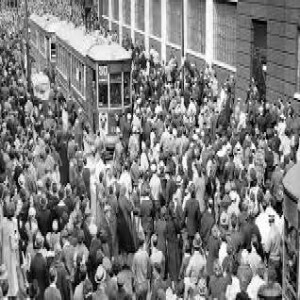
Wednesday Jul 03, 2024
July 3 - The New Deal Against Sit-Downs
Wednesday Jul 03, 2024
Wednesday Jul 03, 2024
On this day in labor history, the year was 1937. That was the day Secretary of Labor, Frances Perkins announced that sit-down strikes were “unsuited” to America and believed labor unions would abandon using the tactic altogether.
Her declaration came in the form of an open letter to Republican Congressman William Ditter of Pennsylvania. In the wake of the Flint Sit-Down strike, he had insisted on clarification of her perspective towards sit-down strikes. 1937 had been rocked by sit-downs everywhere.
Workers made huge gains using the tactic, especially during the historic GM strike in Flint, Michigan. During the strike, Secretary Perkins asserted that the legality of sit-downs had not yet been determined.
In her open letter, Perkins noted that she accepted the opinion of the Third Circuit Court of Appeals. That court had just ruled that thousands of striking hosiery workers at Apex Hosiery in Philadelphia had acted unlawfully when they employed the tactic in their tumultuous strike weeks before.
She added, “It is not and never has been an official position of the Department of Labor or of the Secretary that sit-down strikes are either lawful, desirable or appropriate. In fact, the officers of the Department and the Secretary have urged union leaders and members not to use the method and to bend every effort to take men out of a plant where used… It is also full of hazards to the progressive, democratic development of trade unionism and to the orderly process of collective bargaining and cooperation with employers on the basis of a recognized status.”
Perkins’ statement helped provide the basis for a legal backlash against the tactic, ruled illegal just two year later.
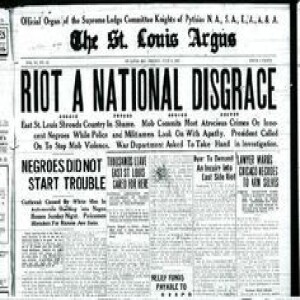
Tuesday Jul 02, 2024
July 2 - A Foul Blot Upon the Labor Movement
Tuesday Jul 02, 2024
Tuesday Jul 02, 2024
On this day in labor history, the year was 1917. That was the day known as the East St. Louis Race Riot. It is considered the worst case of labor–related violence of the 20th century and one of the worst race riots in American history.
At the time, East St. Louis, Illinois was an industrial hub along the Mississippi River, across from St. Louis, Missouri. Production demands for World War I intensified the Great Migration. As African-Americans emigrated from the South, filling the demand for industrial labor, tensions grew at workplaces and in the communities in which they settled.
That spring, black and white workers had been hired to scab on a local strike. The violence began on May 28, when trade unionists marched to the mayor’s office, protesting the black labor they considered ‘unfair competition.’ It quickly turned into an anti-black riot. The National Guard was called out to quell the violence.
Then on July 2, two days of rioting began when a car of white men drove through a black neighborhood and fired at a group of blacks. Racist mobs killed as many as 200 African-Americans. 6000 more were left homeless. Many remarked bitterly that the police and National Guard stood by, indifferent to the race violence around them.
The President of the Illinois Federation of Labor insisted that employers were to blame for using Southern blacks to break the back of labor. Socialist Party leader Eugene V. Debs declared the riots were “a foul blot upon the labor movement.” Debs continued, “Had the labor movement freely opened their doors to the Negro instead of barring him, the atrocious crime of East St. Louis would never have blackened the pages of American History.”

Monday Jul 01, 2024
July 1 - The Po-Boy is Born
Monday Jul 01, 2024
Monday Jul 01, 2024
On this day in labor history, the year was 1929. That was the day 1800 streetcar drivers and motormen walked off the job at New Orleans Public Service.
The Amalgamated Association of Street and Electric Railway Employees, Division 194, had been in contract negotiations for months. They demanded higher wages, a closed shop and an end to arbitrary discharges. The company was looking to bust the Amalgamated with the creation of a company union.
For the first few days, the strike was quiet. But then on July 5, the company brought in strikebreakers. 10,000 union members and their supporters gathered to stop scab service. The company attempted to run a lone streetcar down Canal Street. Immediately it was pelted with bricks and stones. The scab driver bailed.
Another four cars attempted to leave the car barn. Pitched battles raged for hours with police and scabs. Two union men were shot and killed by scabs and hundreds more injured.
Trade unions throughout the city threatened a general strike. The strike raged on for two months. Throughout the summer, trolleys were burned to the ground, tracks destroyed, switches cemented in place. As the weeks wore on, conditions became more desperate.
That’s when Clovis and Bennie Martin, former division 194 conductors, decided to help out. They had since left public transit to open the Martin Brothers’ Coffee Stand and Restaurant. They declared to their former union brothers, “We are with you heart and soul. We are with you till h—l freezes over.”
They offered free super-sized sandwiches for the “poor boys.’ The strikers would eventually win some of their demands. The sandwiches would become a standard in New Orleans cuisine, better known as the po-boy.
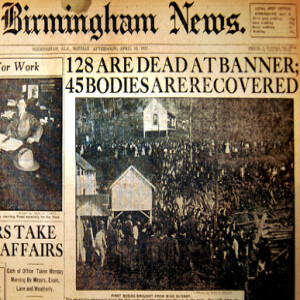
Sunday Jun 30, 2024
June 30 - Convict Lease System Ends in Alabama
Sunday Jun 30, 2024
Sunday Jun 30, 2024
On this day in labor history, the year was 1928. That was the day the state of Alabama outlawed the convict lease system, in practice for decades.
Slave masters throughout the South had routinely loaned out enslaved people before slavery was finally abolished. The convict lease system continued this practice, as the South worked to rebuild in a rush of rapid industrial growth after the Civil War.
African-Americans found themselves increasingly subject to sweeps by local and state authorities that coincided with harvest time or when labor agents arrived, looking to man the coalmines. Many were convicted on trumped up charges and shipped off to prison. Once there, they were leased to private industries and dispatched mostly to coal mines near Birmingham. By 1890, the state profited $164,000 a year. By 1912, prison mining brought in over $1 million in state revenues.
In the PBS documentary, Slavery By Another Name, Douglas Blackmon and other scholars note that prisoners could be driven in a way that earlier enslaved workers and free labor couldn’t. Convict labor served to depress wages, curtail union activity, organizing and strikes. These workers could also be worked practically to death and easily replaced.
Progressive reformers, Socialist Party leaders and UMW District 20 would wage an unrelenting war against the convict lease system for years. Even the 1911 Banner Mine explosion that killed 123 African American prisoners couldn’t outlaw the practice.
Finally, newly elected Governor Bibb Graves yielded to the public outcry that condemned the practice as a relic of barbarism. He also ceded to workers demands for jobs. Graves subsequently put prisoners to work on chain gangs building roads throughout the state, making Alabama the last state to abolish the convict lease system.

Sunday Jun 23, 2024
June 29 - Fighting Insurmountable Odds
Sunday Jun 23, 2024
Sunday Jun 23, 2024
On this day in labor history, the year was 1937.
That was the day SWOC leader Philip Murray beat back reports that the Little Steel Strike had collapsed.
Even as the Steel companies were championing that the strike had been broken, Murray insisted that of the 90,000 workers involved, only 20,000 had returned to work in mills that stretched across seven states.
He added they were mostly supervisors and foremen, not production workers.
Murray leveled charges against Ohio governor Martin Davey, that the Ohio National Guard was being used as company police to smash the strike.
Strike leaders added that the companies were staging ‘dummy’ back-to-work parades.
In fact, Secretary Perkins had announced that it was the government’s efforts at mediation that had collapsed.
But the steel magnates were on the offensive and had the backing of local politicians and police.
George Mike, a union man and disabled veteran was the latest casualty in the anti-labor war.
He was killed the day before at Moltrup Steel in Beaver Falls, Ohio, as picketers clashed with deputy sheriffs.
In Indiana, police rushed to plant gates at Inland Steel to guard against new battles as 20,000 strikers prepared for the imminent forced reopenings of Inland Steel and Youngstown Sheet and Tube there.
Both mills remained closed for weeks.
In Warren, Ohio, police issued a warrant for CIO strike leader Gus Hall and two other strike leaders, on charges he was the ‘brains’ behind a ‘terrorist’ plot to blow up strike-bound steel mills.
And at Bethlehem’s Cambria Works in Johnstown, Pennsylvania, two separate dynamitings destroyed main water supplies causing an immediate end to an attempted back-to-work movement there.
The strike was far from over.
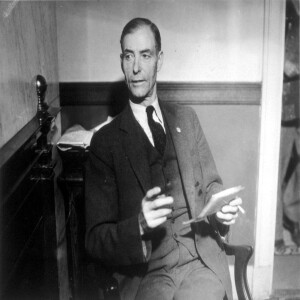
Sunday Jun 23, 2024
June 28 - Harry Bridges Act Signed into Law
Sunday Jun 23, 2024
Sunday Jun 23, 2024
On this day in labor history, the year was 1940.
That was the day President Roosevelt signed the Smith Act into law.
Some initially dubbed it the “Harry Bridges Law,” after the radical labor leader, long targeted by the FBI for deportation.
Politicians claimed it was designed to prosecute Fascists, Nazis and Communists.
In fact, the Smith Act was first used to prosecute and convict Minneapolis Teamsters leaders and supporters of the Socialist Workers Party, recognized for their successful 1934 strike and radical leadership.
Named after the Virginia Democratic Representative Howard W. Smith, it was originally titled the Alien Registration Act of 1940.
In addition to mandating the registration and fingerprinting of resident aliens, it allowed for the deportation of those resident aliens who sought to overthrow the government by force.
But the act also extended to those citizens who advocated the overthrow of the government by force or violence or engaged in the printing, publishing or distributing of materials that advocated sedition.
And it made it illegal for citizens to organize or belong to any association that engaged in such activity.
According to historian Donna Haverty-Stacke, author of Trotskyists on Trial: Free Speech and Political Persecution Since the Age of FDR, the Smith Act “was a peacetime antisedition law that marked a dramatic shift in the legal definition of free speech protection in America…the Minneapolis case shows how far the administration went to prosecute political dissent—even to the point of targeting the labor-liberal left.”
The Smith Act served as a prime tool for the McCarthyite Red Scare, and was used to prosecute more than a hundred Communists and labor leaders. Finally, in a 1957 landmark case, Yates v. Untied States, convictions under the Smith Act were rendered unconstitutional.
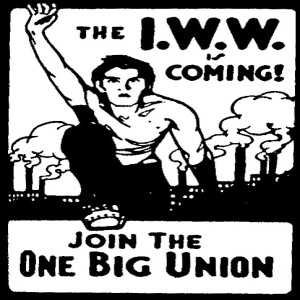
Sunday Jun 23, 2024
June 27 - Founding of the IWW
Sunday Jun 23, 2024
Sunday Jun 23, 2024
On this day in labor history, the year was 1905.
That was the day over 200 Socialists, Anarchists and Marxists, representing over 40 organizations, met at Brand’s Hall in Chicago to convene the founding of the Industrial Workers of the World.
Representatives from groups like the Socialist Party, Socialist Labor Party and Western Federation of Miners joined together for an eleven-day convention to discuss the future of industrial unionism and revolutionary struggle.
Those present included Big Bill Haywood, James Connolly, Daniel De Leon, Eugene Debs, Lucy Gonzalez Parsons, Mother Jones and many others.
They hoped to cohere an alternative to the politically conservative, business unionism of the American Federation of Labor.
They sought to Build on the legacy of the Knights of Labor and their motto of “An injury to one is an injury to all.”
They were determined to build an industrial union that organized workers regardless of skill level.
They also distinguished themselves by opening their doors to men and women; black, white and all immigrant workers, including Asians.
Big Bill Haywood opened the first day’s morning session with the following remarks: “This is the Continental Congress of the working class.
We are here to confederate the workers of this country into a working class movement that shall have as its purpose the emancipation of the working class from the slave bondage of capitalism.
There is no organization that has for its purpose the same object as that for which you are called together today.
The aims and objects of this organization should be to put the working class in possession of the economic power, the means of life, in control of the machinery of production and distribution, without regard to capitalist masters.”
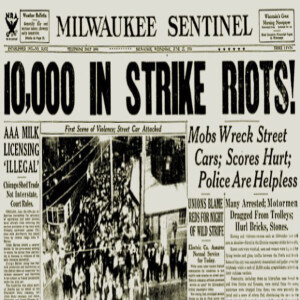
Sunday Jun 23, 2024
June 26 - Milwaukee Transit Workers Join the ‘34 Strike Wave
Sunday Jun 23, 2024
Sunday Jun 23, 2024
On this day in labor history, the year was 1934.
That was the day 1400 workers at the Milwaukee Electric Railway and Light Company launched a four-day strike.
Three unions, representing about a third of the total employees, were fighting to break the hold of the company union.
The transit and power company had already fired 13 workers for union activity.
IBEW, Operating Engineers and the Amalgamated Association of Street and Electric Railway Employees unions led the walkout.
They demanded reinstatement of their fired coworkers.
They also wanted the right to pick their own bargaining representatives and insisted the company union rescind its policy of barring strikers from membership and further employment.
The walkout began early that morning as strikers surrounded car barns, garages and power plants.
Company agents barricaded facilities with barbed wire, supplied Pullman cars for strikebreakers and posted armed guards on streetcars.
Almost immediately, striker Joseph Urbanski was mowed down and seriously injured as he tried to stop a scab streetcar.
By nightfall, 5,000 strikers and their supporters had blocked five transit lines.
They ripped protective screens from streetcar windows and forced scab drivers to abandon their routes.
As crowds swelled to 10,000 on the second day of the strike, a little more than half of all cars were in service.
More than 100 streetcars had been damaged.
Socialist Mayor Daniel Hoan placed the blame squarely on the utility company.
Street battles with police and scabs continued into the third day of the strike.
Milwaukee’s Federated Trades and Building Trades Councils threatened a general strike in the city by July 2 if the strike was not settled.
By June 30, workers celebrated total victory when the company conceded to all of their demands.

